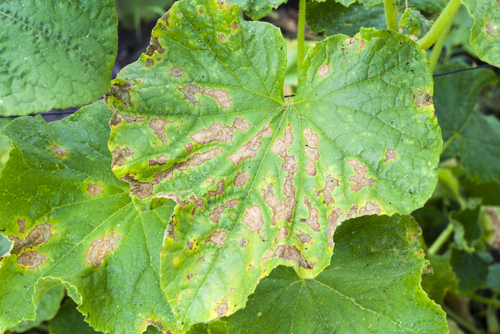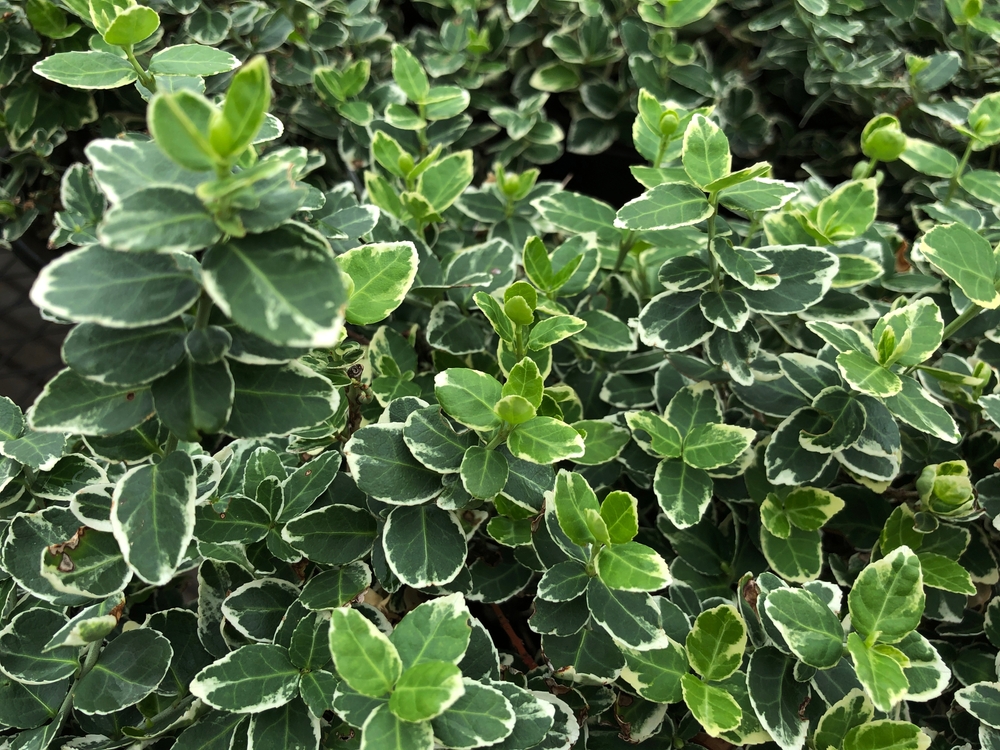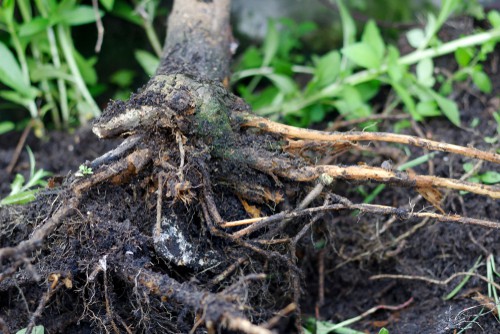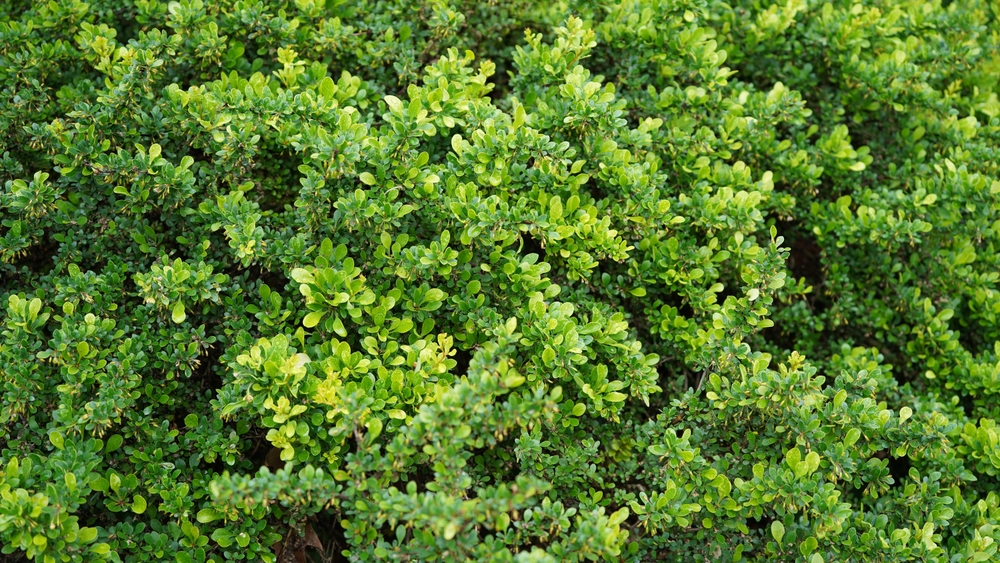Holly bushes are a common sight in many gardens and yards, prized for their glossy green leaves and bright red berries. However, when the leaves of a holly plant start to turn yellow with black spots, it can be a cause for concern.
This article will explore the causes of yellowing and spots on holly leaves, the impact it can have on the plant, and how to prevent and treat the issue.
Understanding Yellow and Black Spots on Holly Leaves Yellowing and black spots on holly leaves can be caused by a variety of factors, including fungal infections, nutrient deficiencies, and environmental stress.
The spots may start out small and gradually grow larger, eventually causing the leaves to drop off the plant. It is important to identify the underlying cause of the issue in order to effectively treat it and prevent it from recurring.
Common Causes of Yellowing and Spots One of the most common causes of yellowing and spots on holly leaves is a fungal infection, such as holly leaf spot or holly tar spot.
These infections typically occur during wet spring weather and can cause the leaves to develop black, brown, or yellow spots. Other causes of yellowing and spots on holly leaves include nutrient deficiencies, such as iron chlorosis, and environmental stressors, such as drought or poor drainage.
Key Takeaways on Holly Leaves Turning Yellow with Black Spots
- Yellowing and black spots on holly leaves can be caused by fungal infections, nutrient deficiencies, and environmental stress.
- Common causes of yellowing and spots on holly leaves include holly leaf spot, holly tar spot, iron chlorosis, drought, and poor drainage.
- Preventative measures such as proper maintenance and care of holly plants can help prevent yellowing and spots on holly leaves.
Also see:
- Hibiscus Leaves Turning Yellow With Black Spots
- Black Spots on Hibiscus Leaves
- Fungus Black Spots on Succulent Leaves
Understanding Yellow and Black Spots on Holly Leaves

Holly leaves are known for their glossy green appearance, which makes them a popular choice for landscaping and holiday decorations.
However, when holly leaves start to develop yellow and black spots, it can be concerning for gardeners and homeowners. In this section, we will explore the possible causes of yellow and black spots on holly leaves and how to address them.
Tar Spot
One of the most common causes of yellow and black spots on holly leaves is tar spot. Tar spot is a fungal disease that affects holly trees and shrubs, and it is caused by several different fungi.
The symptoms of tar spot include small to large, irregularly shaped yellow-brown spots that appear on the leaves during the winter and spring. As the disease progresses, the spots turn black and may cause the leaves to fall off prematurely.
To prevent tar spot, it is recommended to keep the area around the holly tree or shrub clean and free of fallen leaves. Fungicides can also be used to prevent or treat tar spot, but it is important to follow the instructions carefully.
Chlorosis
Another possible cause of yellow spots on holly leaves is chlorosis. Chlorosis is a condition where the leaves lose their green color and turn yellow or white. This can be caused by a lack of nutrients, such as iron or magnesium, in the soil.
To address chlorosis, it is recommended to test the soil and add nutrients as needed. This can be done by using fertilizers or adding organic matter to the soil.
Holly Disease
Finally, yellow and black spots on holly leaves can also be a symptom of holly disease. There are several different diseases that can affect holly trees and shrubs, including holly leaf spot and Phacidium species. The symptoms of holly disease include yellow spots on the leaves that may turn reddish-brown or black over time.
To prevent holly disease, it is recommended to keep the holly tree or shrub healthy and well-maintained. This includes regular pruning, watering, and fertilizing. If the tree or shrub does become infected with a disease, it is important to take action quickly to prevent the spread of the disease to other plants in the area.
Holly Leaves Turning Yellow with Black Spots
Yellowing and black spots on holly leaves can be caused by several factors, including fungal infections, poor soil conditions, and pests. Understanding the specific cause is key to effectively treating the issue and preventing further damage.
1. Phacidium Curtisii
Phacidium curtisii is a fungus that causes small yellow spots on holly leaves, which eventually turn reddish-brown and develop black tar-like spots.
This fungus is more common on American holly and can spread quickly in moist conditions. The fungus can be controlled by removing infected leaves and improving soil drainage to reduce moisture.
2. Coniothyrium Ilicinum

Coniothyrium ilicinum is another fungus that causes yellow spots on holly leaves, which turn reddish-brown and black. Unlike Phacidium curtisii, Coniothyrium ilicinum is more common on English holly. The fungus can be controlled by removing infected leaves and increasing air circulation around the holly bush.
3. Phytophthora Ilicis
Phytophthora ilicis is a soil-borne fungus that causes root rot in holly plants, which can lead to yellowing and black spots on the leaves. This fungus thrives in poorly drained soils and can be controlled by improving soil drainage and avoiding overwatering.
4. Rhytisma Curtisii
Rhytisma curtisii is a fungus that causes yellow spots on holly leaves, which eventually turn black. This fungus is more common on American holly and can be controlled by removing infected leaves and improving air circulation around the holly bush.
5. Macroderma Curtisii
Macroderma curtisii is a fungus that causes yellow spots on holly leaves, which eventually turn black. This fungus is more common on English holly and can be controlled by removing infected leaves and increasing air circulation around the holly bush.
Other factors that can contribute to yellowing and black spots on holly leaves include poor soil pH, over-fertilization, drought stress, scale insects, transplant shock, and nematodes. It is important to properly diagnose the cause of the issue and take appropriate measures to prevent further damage.
Impact of Yellowing and Spots on Holly Plants
When holly leaves turn yellow with black spots, it can be a sign of various diseases and pests that can negatively impact the health of the plant. Different types of holly plants are susceptible to various diseases and pests, which can cause different types of damage.
Here are some of the impacts of yellowing and spots on different types of holly plants:
1. English Holly
English holly is susceptible to various diseases and pests, including holly leaf spot, holly tar spot, and spider mites. These can cause yellowing of leaves, black spots, and defoliation, which can weaken the plant and make it more susceptible to other problems.
Holly leaf spot and holly tar spot are fungal diseases that can cause leaf drop and defoliation. Spider mites can cause yellowing of leaves, stunted growth, and twig dieback.
2. Chinese Holly
Chinese holly is susceptible to various diseases and pests, including scale insects, spider mites, and holly leaf spot. These can cause yellowing of leaves, black spots, and defoliation, which can weaken the plant and make it more susceptible to other problems.
Scale insects can cause plant damage, while spider mites can cause yellowing of leaves, stunted growth, and twig dieback. Holly leaf spot is a fungal disease that can cause leaf drop and defoliation.
3. Japanese Holly

Japanese holly is susceptible to various diseases and pests, including spider mites, scale insects, and holly leaf spot. These can cause yellowing of leaves, black spots, and defoliation, which can weaken the plant and make it more susceptible to other problems.
Spider mites can cause yellowing of leaves, stunted growth, and twig dieback. Scale insects can cause plant damage, while holly leaf spot is a fungal disease that can cause leaf drop and defoliation.
4. Yaupon Holly
Yaupon holly is susceptible to various diseases and pests, including scale insects, spider mites, and holly leaf spot. These can cause yellowing of leaves, black spots, and defoliation, which can weaken the plant and make it more susceptible to other problems.
Scale insects can cause plant damage, while spider mites can cause yellowing of leaves, stunted growth, and twig dieback. Holly leaf spot is a fungal disease that can cause leaf drop and defoliation.
5. American Holly
American holly is susceptible to various diseases and pests, including spider mites, scale insects, and holly leaf spot. These can cause yellowing of leaves, black spots, and defoliation, which can weaken the plant and make it more susceptible to other problems.
Spider mites can cause yellowing of leaves, stunted growth, and twig dieback. Scale insects can cause plant damage, while holly leaf spot is a fungal disease that can cause leaf drop and defoliation.
Prevention and Treatment
Holly leaves turning yellow with black spots can be caused by several fungal diseases and environmental factors. Prevention is the best way to avoid these diseases, but treatment is also available. In this section, we will discuss the prevention and treatment of the most common holly leaf diseases.
1. Phytophthora Root Rot
Phytophthora root rot is a fungal disease that affects the roots of holly plants, leading to yellowing leaves and stunted growth. The disease is caused by overwatering, poor drainage, and soil compaction. To prevent this disease, it is important to avoid overwatering, ensure good drainage, and avoid soil compaction.
Mulching can also help to maintain soil moisture levels and prevent soil compaction. If Phytophthora root rot is detected, the affected plants should be removed and destroyed. Fungicides can be used to prevent the spread of the disease.
2. Holly Tar Spot
Holly tar spot is a fungal disease that causes black spots on holly leaves. The disease is spread by spores and can be prevented by improving air circulation around holly plants.
Pruning can also help to improve air circulation and prevent the spread of the disease. If holly tar spot is detected, the affected leaves should be removed and destroyed. Fungicides can be used to prevent the spread of the disease.
3. Black Root Rot

B
lack root rot is a fungal disease that affects the roots of holly plants, leading to yellowing leaves and stunted growth. The disease is caused by overwatering, poor drainage, and soil compaction.
To prevent this disease, it is important to avoid overwatering, ensure good drainage, and avoid soil compaction. Mulching can also help to maintain soil moisture levels and prevent soil compaction.
If black root rot is detected, the affected plants should be removed and destroyed. Fungicides can be used to prevent the spread of the disease.
4. Spine Spot
Spine spot is a fungal disease that causes black spots on holly leaves. The disease is spread by spores and can be prevented by improving air circulation around holly plants.
Pruning can also help to improve air circulation and prevent the spread of the disease. If spine spot is detected, the affected leaves should be removed and destroyed. Fungicides can be used to prevent the spread of the disease.
In addition to the above measures, it is also important to maintain good irrigation practices and use systemic insecticides to prevent insect infestations that can weaken holly plants and make them more susceptible to fungal diseases. Neem oil can also be used as a natural fungicide to prevent fungal diseases.
Prevention is always the best approach to avoid holly leaf diseases. However, if any of the above diseases are detected, prompt treatment can help to prevent the spread of the disease and save the plant.
Maintenance and Care of Holly Plants
Holly Trees
Holly trees are evergreens that require proper care and maintenance to remain healthy and beautiful. One common issue that holly trees face is yellow leaves with black spots.
This can be caused by a variety of factors, including iron deficiency, chlorophyll loss, and fungal diseases. To prevent and address these issues, it is important to follow proper cultural practices.
One important aspect of holly tree care is soil management. Holly trees prefer well-draining soil with a pH between 5.0 and 6.5. If the soil is too alkaline, the tree may suffer from iron deficiency, which can cause yellow leaves.
A soil test kit can be used to determine the pH and nutrient levels of the soil. If the pH is too high, sulfur or iron sulfate can be added to lower it.
Another important aspect of care is proper watering. Holly trees should be watered deeply once a week during the growing season. This will help to prevent drought stress and ensure that the tree receives enough moisture. Overwatering can also be a problem, as it can lead to root rot and yellow leaves.
Holly Bushes

Holly bushes, like holly trees, require proper care to remain healthy and beautiful. One common issue that holly bushes face is yellow leaves with black spots. This can be caused by a variety of factors, including fungal diseases, iron deficiency, and poor drainage.
To prevent and address these issues, it is important to follow proper cultural practices. One important aspect of holly bush care is soil management. Holly bushes prefer well-draining soil with a pH between 5.0 and 6.5.
If the soil is too alkaline, the bush may suffer from iron deficiency, which can cause yellow leaves. A soil test kit can be used to determine the pH and nutrient levels of the soil. If the pH is too high, sulfur or iron sulfate can be added to lower it.
Another important aspect of care is proper watering. Holly bushes should be watered deeply once a week during the growing season. This will help to prevent drought stress and ensure that the bush receives enough moisture. Overwatering can also be a problem, as it can lead to root rot and yellow leaves.
Frequently Asked Questions
What causes white spots on holly leaves?
White spots on holly leaves are usually caused by a fungal disease known as holly leaf spot or holly tar spot. This disease is characterized by black, yellow, or brownish spots on the leaves which eventually turn white.
The spots can be circular or irregular in shape, and they may appear on the upper or lower surface of the leaves.
How can I treat holly leaf blight?
Holly leaf blight can be treated with fungicides that contain copper or chlorothalonil. These fungicides should be applied in the early spring, before new growth appears.
In addition, it is important to prune infected branches and leaves and to dispose of them properly. This will help prevent the disease from spreading to other parts of the plant.
What are the symptoms of holly leaf blight?
The symptoms of holly leaf blight include yellowing and browning of the leaves, as well as the formation of black spots. The spots may be circular or irregular in shape, and they may appear on the upper or lower surface of the leaves. In severe cases, the leaves may fall off the plant.
Why are my holly leaves turning brown in summer?
Holly leaves may turn brown in summer due to a lack of water or nutrients. In addition, the leaves may be damaged by high temperatures or direct sunlight.
To prevent brown leaves, it is important to water the plant regularly and to fertilize it with a balanced fertilizer. It is also important to provide shade for the plant during the hottest part of the day.
How do I treat black spots on my holly leaves?
Black spots on holly leaves are usually caused by a fungal disease known as holly leaf spot or holly tar spot.
To treat this disease, it is important to apply fungicides that contain copper or chlorothalonil. In addition, infected leaves and branches should be pruned and disposed of properly.
What causes holly berries to turn black?
Holly berries may turn black due to a fungal disease known as black rot. This disease is caused by the fungus Botryosphaeria dothidea and is characterized by black, sunken lesions on the berries.
To prevent black rot, it is important to prune infected branches and to dispose of them properly. In addition, it is important to avoid overhead watering, which can promote the spread of the disease.

Hey, I’m Lisa and I’ve been an avid gardener for over 30 years. I love writing, talking and living in the garden! Feel free to connect with me on my socials below

